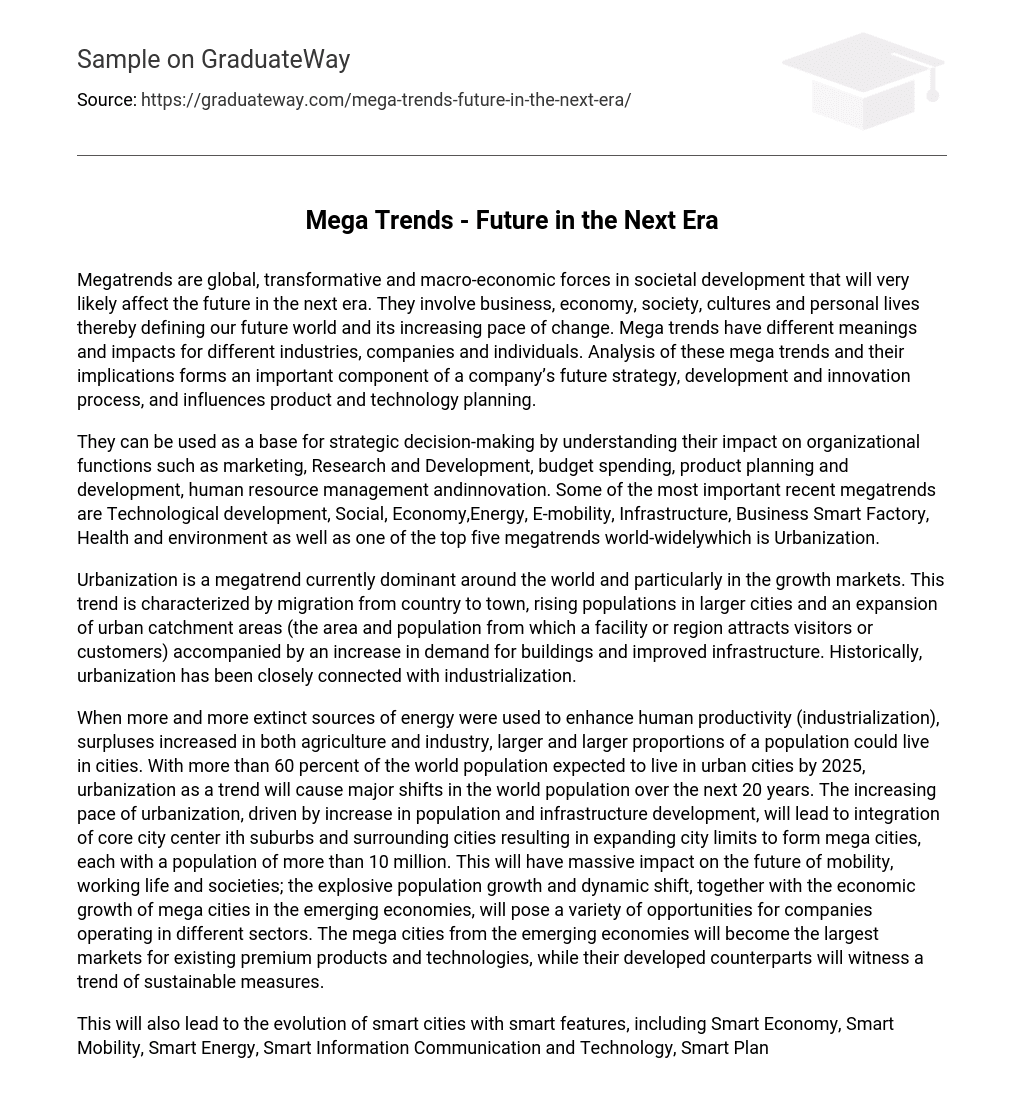Megatrends are global, transformative and macro-economic forces in societal development that will very likely affect the future in the next era. They involve business, economy, society, cultures and personal lives thereby defining our future world and its increasing pace of change. Mega trends have different meanings and impacts for different industries, companies and individuals. Analysis of these mega trends and their implications forms an important component of a company’s future strategy, development and innovation process, and influences product and technology planning.
They can be used as a base for strategic decision-making by understanding their impact on organizational functions such as marketing, Research and Development, budget spending, product planning and development, human resource management andinnovation. Some of the most important recent megatrends are Technological development, Social, Economy,Energy, E-mobility, Infrastructure, Business Smart Factory, Health and environment as well as one of the top five megatrends world-widelywhich is Urbanization.
Urbanization is a megatrend currently dominant around the world and particularly in the growth markets. This trend is characterized by migration from country to town, rising populations in larger cities and an expansion of urban catchment areas (the area and population from which a facility or region attracts visitors or customers) accompanied by an increase in demand for buildings and improved infrastructure. Historically, urbanization has been closely connected with industrialization.
When more and more extinct sources of energy were used to enhance human productivity (industrialization), surpluses increased in both agriculture and industry, larger and larger proportions of a population could live in cities. With more than 60 percent of the world population expected to live in urban cities by 2025, urbanization as a trend will cause major shifts in the world population over the next 20 years. The increasing pace of urbanization, driven by increase in population and infrastructure development, will lead to integration of core city center ith suburbs and surrounding cities resulting in expanding city limits to form mega cities, each with a population of more than 10 million. This will have massive impact on the future of mobility, working life and societies; the explosive population growth and dynamic shift, together with the economic growth of mega cities in the emerging economies, will pose a variety of opportunities for companies operating in different sectors. The mega cities from the emerging economies will become the largest markets for existing premium products and technologies, while their developed counterparts will witness a trend of sustainable measures.
This will also lead to the evolution of smart cities with smart features, including Smart Economy, Smart Mobility, Smart Energy, Smart Information Communication and Technology, Smart Planning and Smart Governance. In order to cope with some dramatic changes, Smart (Green) Mobility is one requirement which is meeting the transportation needs of people and freight, while enhancing the economic, environmental, and human resources. For instance, Smart mobility includes lightweight construction concepts for vehicle body parts and high-performance rubber for the manufacture of smooth running, fuel-saving tires.
Hybrid vehicles are a common example. Moreover, to be successful in attaining a Smart Mobility future that offers meaningful benefits, Smart Mobility principles must be introduced into a wide variety of activities of planning implementing and coordinating between governments and agencies for instance. To some extent, megatrends indicate something about the probable future. Every megatrend can be set aside or can suddenly and fundamentally change directiontherefore it became essential to study the implications since these they are taking part in transforming society, markets and cultures.





